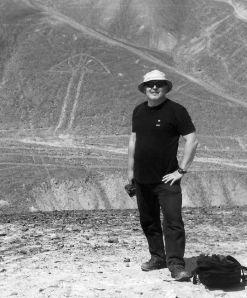Lectures / 20/05/2009 7:30 pm
Perception?
Can algorithmic art be generated from 2,000-year-old symbols? On disappearance, perspective and utopian projections
In 1989, when the Eastern bloc had to reinvent itself owing to the pressures of the arms race and when the symbols of this formerly powerful system were declared worthless, it was high time for Wolfgang Dorninger to cast his three most important artistic themes – Disappear¬ance, Perspective, Projection – into a three-part multimedia work. The piece on disappearance was felt by the composer not to be entirely satsifactory at the time. Nine years passed and on a trip in the South West of the United States Dorninger came across the culture of the Hisatsinom, a highly developed indigenous culture that disappeared within three generations, leaving behind a host of unanswered questions as to how this had happened. Dorninger “Hisatsinom. On Disappearing” was first performed in 2001 at the Festival 4020. It has the media savvy sound artist exploring the wide fields of archaeology and anthropology. The lecture will make clear whether this kind of knowledge has left any traces in the work of art in question and to what extent; and what cultures the artist’s insights into perspective and utopian projections are derived from.
continuative Links:
- http://dorninger.servus.at/profil
- http://dorninger.servus.at/node/154
- http://dorninger.servus.at/node/140
- http://www.htw-dresden.de/~nazca/
Bibliography:
Hisatsinom, über das Verschwinden:
- Virilio, Paul: Ästhetik des Verschwindens (Merve Verlag)
- Charles, Daniel: Musik und Vergessen (Merve Verlag)
- Sofaer, Anna: A Primary Architecture of the Chacoan Culture. A Cosmological Expression, In: Anasazi Architecture and American Design, ed. Baker H. Morrow and V.B. Price
- Stein, Suiter, Ford: High Noon on Old Bonito
- Adler, Michael M.: The Prehistoric Pueblo World A.D. 1150-1350
- Johnson, Georg: Social Strife May Have Exiled Ancient Indians
Nasca, über die Perspektive:
- Reiche, Maria: Geheimnis der Wüste (Selbstverlag Maria Reiche)
- Nasca Symposium 2006 (HTW Dresden)
- Lambers, Karsten: The Geoglyphs of Palpa, Peru (Hrsg. von der Kommission für Archäologie außereuropäischer Kulturen des DAI)
- Schulze, Dietrich: Bilderbuch der Wüste: Maria Reiche und die Bodenzeichnungen von Nasca (Mitteldeutscher Verlag)
Shangri-La, Projektionen von Utopia:
- Peissl, Michel: Mustang – A Lost Tibetan Kingdom (Book Faith India)
- LePage, Victoria: Shambhala (Pilgrims Publishing)
- Schmidt, Arno: Schwarze Spiegel (Suhrkamp)
- Bloch, Ernst: Geist der Utopie (Suhrkamp)
- Jameson, Frederic: Archaeologies of the Future (Verso)
- Bloch, Jan Robert: Utopie: Ortbestimmung im Nirgendwo






